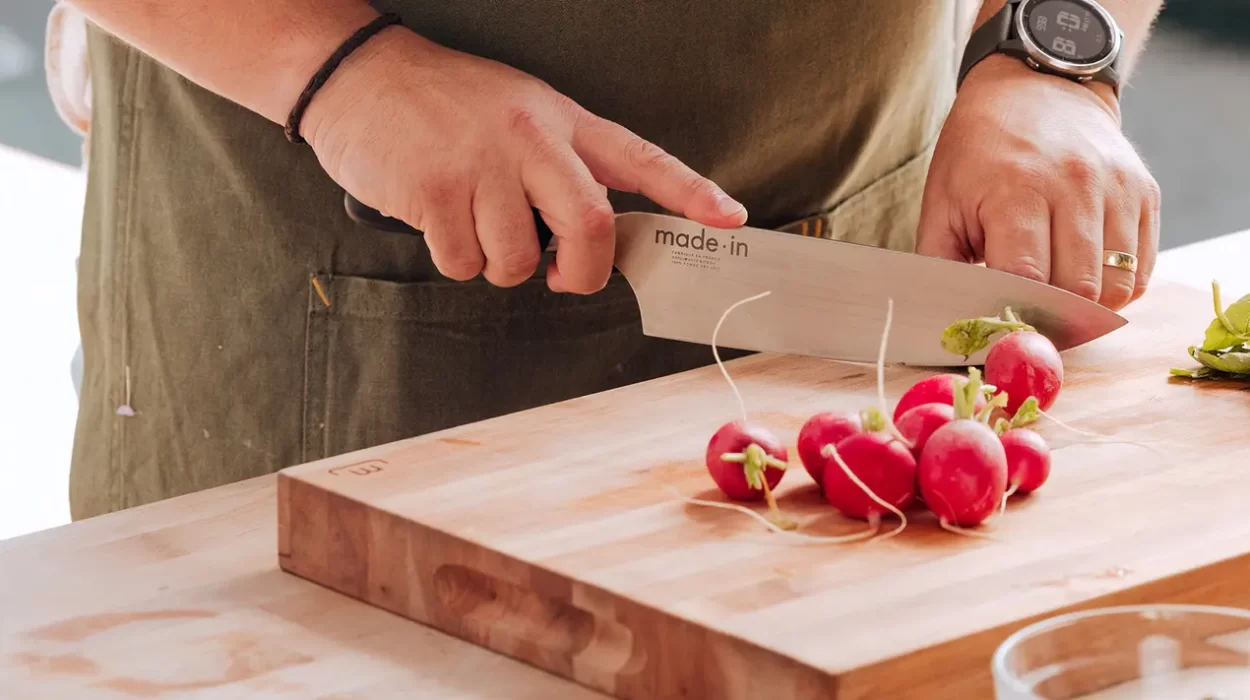A cut finger from a knife is one of the most common injuries faced by kitchen professionals as well as home cooks. Whether youre dicing vegetables or slicing meats with precision, accidents can happen in mere seconds. Knowing how to treat a cut finger from a knife quickly and effectively can save you time, pain, and even improve your recovery. In this guide, well walk you through everything from first aid measures to preventing future cuts in the kitchen.

The Immediate Steps: Stay Calm and Act Fast
Before diving into anything else, remember that staying calm is key. Panicking can make the injury worse and slow your efficiency in treating the wound.
Step 1: Clean the Wound
First and foremost, clean the wound with lukewarm water. Let the water run freely to wash away debris, dirt, and bacteria. Avoid using soap directly in the wound, as it can irritate the injury.
Step 2: Stop the Bleeding
Apply gentle but firm pressure using a clean cloth or gauze. Elevate your hand above your heart level to slow blood flow and encourage clotting.
Step 3: Disinfect and Protect
Once the bleeding has stopped or reduced significantly, disinfect the cut. Use an antiseptic wipe or apply hydrogen peroxide. Then cover the injury with a sterile bandage or gauze to keep it clean.
When to Seek Medical Attention
While many cuts can be treated at home, certain instances require professional medical care:
- Severe bleeding that doesnt stop after 10 minutes of pressure
- Deep cuts exposing tissue or bone
- Signs of infection, such as redness, warmth, or pus
- Loss of sensation or movement in the finger
Emergency Signs to Watch Out For
If youre unsure whether your cut requires medical attention, dont hesitate to consult a doctor or visit the nearest clinic. Using precautions is always better than neglecting a serious injury.
Essential First Aid Items for Treating Cuts
Its wise to have a well-stocked first aid kit in your kitchen for quick access. Here are the essentials youll need:
- Adhesive bandages of various sizes
- Sterile gauze pads
- Antiseptic solution or wipes
- Hydrogen peroxide
- Medical gloves for sanitation
- Scissors for cutting gauze or tape
- Antibacterial ointment
Want to Learn More About Knife Handling?
Proper knife-handling techniques can significantly reduce your chances of injury. Check out this guide on proper cutting methods to improve your skills in the kitchen.
Top Mistakes People Make When Treating Cuts
Avoiding common mistakes can make your treatment more effective:
- Skipping the cleaning process
- Using dirty cloths or materials to stop bleeding
- Ignoring persistent bleeding
- Over-tightening bandages
What Not to Do
Do not use home remedies like applying coffee grounds or turmeric directly to the wound. Stick to medical-grade antiseptics and clean materials for better results.
How to Prevent Knife Injuries in the Kitchen
Prevention is the best cure! Learning proper slicing techniques and maintaining a safe workspace will reduce your chances of getting injured.
1. Use Proper Knife Techniques
Proper knife techniques prevent slips and accidental cuts. For example, hold your knife firmly and use a claw grip to keep your fingers away from the blade. Heres a great article on proper slicing methods to explore safer chopping techniques.
2. Invest in Gloves and Sharpened Knives
Using a dull knife increases your risk of cutting yourself, as it requires more force to slice through food, leading to decreased control.
3. Keep Your Workspace Clear
A clutter-free workspace not only improves efficiency but also reduces the chance of accidents in the kitchen.
External Expert Tips
Learn more about avoiding kitchen injuries with this informative guide from Cooking Hub.

FAQs About Treating Cut Fingers
1. How long does it take for a cut to heal?
Most minor cuts heal in 7-10 days, provided they are properly cleaned and protected.
2. Can I use super glue on a cut?
Medical-grade adhesive can be used for minor cuts. However, consult a doctor before trying this.
3. What if I dont have a bandage?
Use clean fabric or gauze. Make sure the material is sterilized to prevent infection.
In conclusion, knowing how to treat a cut finger from a knife gives you tools to act quickly and effectively. With the right first aid steps, you can promote healing and reduce risks. Dont forget to focus on prevention by learning proper knife skills and maintaining a clutter-free kitchen environment.
This article contains affiliate links. We may earn a commission at no extra cost to you.


